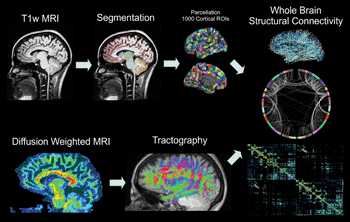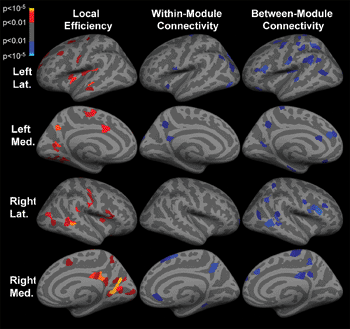MR Research Reveals Altered Brain Connections in Epilepsy Patients
By MedImaging International staff writers
Posted on 12 Dec 2013
New imaging findings show that patients with the most typical form of focal epilepsy have widespread, abnormal connections in their brains. This new research could provide insights for better diagnosis and treatment of the disorder.Posted on 12 Dec 2013
The study’s findings were published online November 19, 2013, in the journal Radiology. Temporal lobe epilepsy (TLE) is characterized by seizures originating from the temporal lobes. Clinicians at first believed that the disorder was related to isolated injuries of structures within the temporal lobe, such as the hippocampus. However, recent research has implicated the default mode network (DMN), the set of brain regions activated during task-free introspection and deactivated during goal-directed behavior. The DMN consists of several hubs that are more active during the resting state.
Researchers performed diffusion tensor imaging—a type of magnetic resonance imaging (MRI) technology that monitors the diffusion of water in the brain’s white matter—of the nerve fibers that send signals throughout the brain to analyze the patients. The study group consisted of 24 patients with left temporal lobe epilepsy who were scheduled for surgery to remove the site from where their seizures emanated. The researchers compared them with 24 healthy controls using an MRI protocol designed to find white matter tracts with diffusion imaging at high resolution. The data were studied with a new technique that identifies and quantifies structural connections in the brain.
Patients with left temporal lobe epilepsy showed a drop in long-range connectivity of 22%–45% among areas of the DMN when compared with the healthy controls. “Using diffusion MRI, we found alterations in the structural connectivity beyond the medial temporal lobe, especially in the default mode network,” said Steven M. Stufflebeam, MD, from the Athinoula A. Martinos Center for Biomedical Imaging at Massachusetts General Hospital (Boston, MA, USA).
In addition to reduced long-range connectivity, the epileptic patients had an 85%–270% increase in local connectivity within and beyond the DMN. The researchers believe this may be an adaptation to the loss of the long-range connections. “The increase in local connections could represent a maladaptive mechanism by which overall neural connectivity is maintained despite the loss of connections through important hub areas,” Dr. Stufflebeam said.
The findings are supported by earlier functional MRI scans that have shown decreased functional connectivity in DMN areas in temporal lobe epilepsy. Researchers are not sure if the structural changes cause the functional changes, or the opposite. “It’s probably a breakdown of myelin, which is the insulation of neurons, causing a slowdown in the propagation of information, but we don’t know for sure,” Dr. Stufflebeam said.
Dr. Stufflebeam and colleagues plan to continue their research, using structural and functional MRI with electroencephalography and magnetoencephalography to monitor diffusion changes and visualize real-time brain activity. “Our long-term goal is to see if we can we predict from diffusion studies who will respond to surgery and who will not,” he said.
The study is part of the Human Connectome Project, a five-year project funded by the National Institutes of Health that uses neuroimaging techniques to study connectomics, or the functional and structural connections in the brain.
Related Links:
Massachusetts General Hospital




![Image: Surface representation shows the gray-white matter junction of the seven modules that emerge by using the Newman spectral algorithm on an across-subject (both healthy subjects and patients with temporal lobe epilepsy [TLE]) average connectivity matrix (Photo courtesy of RSNA). Image: Surface representation shows the gray-white matter junction of the seven modules that emerge by using the Newman spectral algorithm on an across-subject (both healthy subjects and patients with temporal lobe epilepsy [TLE]) average connectivity matrix (Photo courtesy of RSNA).](https://globetechcdn.com/mobile_medicalimaging/images/stories/articles/article_images/2013-12-12/JQR-169b.gif)












